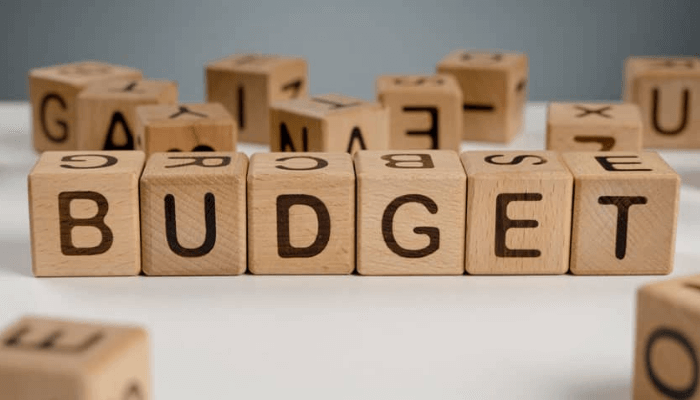Managing your finances can be a daunting task, especially if you’re just starting out. Whether you’re trying to pay off debt, save for the future, or simply make ends meet, creating a budget is an essential step towards financial stability. The 50 30 20 rule is a simple yet effective method that helps you allocate your income towards necessities, wants, and savings.
By breaking down your spending into these three categories, you can gain a better understanding of where your money is going and make necessary adjustments to achieve your financial goals. In this article, we’ll explore the 50 30 20 rule in detail and provide practical tips on how to implement it into your budgeting strategy. Whether you’re a recent graduate or a seasoned professional, mastering your finances with the 50 30 20 rule can help you take control of your money and live the life you want.
Understanding your income and expenses
Before you can start creating a budget, it’s important to understand your income and expenses. Your income is the money you earn each month, while your expenses are the money you spend on things like rent, food, and bills. To get a clear picture of your financial situation, you’ll need to calculate your net income, which is your total income minus taxes and other deductions.
Once you have a clear understanding of your net income, it’s time to take a closer look at your expenses. Start by making a list of all your monthly expenses, including rent, utilities, groceries, transportation, and any other bills you have. It’s also a good idea to track your spending for a month or two to get a better idea of where your money is going. This will help you identify areas where you can cut back and save money.
It’s important to prioritize your expenses based on their importance. This will help you make sure that you’re covering your basic needs before spending money on wants or savings. By understanding your income and expenses, you’ll be better equipped to create a budget that works for you.
Calculating your budget using the 50 30 20 rule
Now that you have a clear understanding of your income and expenses, it’s time to start creating your budget using the 50 30 20 rule. This rule is simple: 50% of your income should go towards necessities, 30% towards wants, and 20% towards savings and debt repayment.
It’s important to note that these percentages are just a guideline. Depending on your financial situation, you may need to adjust them to fit your needs. For example, if you have a lot of debt, you may want to allocate more than 20% of your income towards debt repayment.
To calculate your budget using the 50 30 20 rule, start by multiplying your net income by 0.5 to get the amount you should spend on necessities. Then, multiply your net income by 0.3 to get the amount you should spend on wants. Then multiply your net income by 0.2 to get the amount you should allocate towards savings and debt repayment.
The 50% category – Needs

The first category in the 50 30 20 rule is necessities. These are the things that you need to live, such as housing, food, utilities, transportation, and healthcare. It’s important to make sure that you’re covering your necessities before spending money on wants or savings.
When it comes to housing, try to keep your rent or mortgage payments to no more than 30% of your net income. If you’re spending more than that, you may need to consider downsizing or finding a roommate to help share expenses. For food, try to stick to a budget by meal planning and buying groceries in bulk. This will help you save money and avoid overspending.
For utilities, try to conserve energy by turning off lights and electronics when they’re not in use. You can also save money by using programmable thermostats and taking shorter showers. Finally, when it comes to healthcare, make sure you have adequate insurance coverage and take advantage of preventative care to avoid costly medical bills in the future.
The 30% category – Wants
The second category in the 50 30 20 rule is wants. These are the things that you don’t necessarily need but enjoy, such as entertainment, shopping, and dining out. While it’s important to treat yourself from time to time, it’s also important to make sure that your wants don’t exceed your budget.
When it comes to entertainment, try to find free or low-cost activities, such as hiking or visiting a local museum. For shopping, try to stick to a budget by making a list of what you need and only buying what’s on the list. You can also save money by shopping during sales or using coupons.
Finally, when it comes to dining out, try to limit how often you eat out and look for deals or discounts before choosing a restaurant. You can also save money by cooking at home more often and taking your lunch to work instead of going out.
The 20% category – Savings and debt repayment
The third and final category in the 50 30 20 rule is savings and debt repayment. This category is crucial for achieving financial stability and reaching your long-term goals, such as buying a house or retiring comfortably. It’s important to make sure that you’re allocating enough money towards savings and debt repayment each month.
When it comes to savings, try to set aside at least 10% of your net income each month in a savings account. You can also consider investing your money in stocks, bonds, or real estate to help it grow over time.
For debt repayment, try to focus on paying off high-interest debt first, such as credit card debt or personal loans. Once you’ve paid off your high-interest debt, you can focus on paying off other debts, such as student loans or a mortgage.
Tips for sticking to your budget
Creating a budget is one thing, but sticking to it is another. Here are some tips to help you stay on track:
- Use cash instead of credit cards to avoid overspending.
- Track your spending and adjust your budget as needed.
- Look for ways to save money, such as cutting back on subscriptions or negotiating bills.
- Use apps or online tools to help you stay organized and motivated.
- Focus on your long-term goals and remind yourself why you’re budgeting in the first place.
Common budgeting mistakes to avoid
When creating a budget, it’s important to avoid common mistakes that can derail your progress. Here are some mistakes to watch out for:
- Underestimating your expenses and overspending.
- Failing to prioritize your expenses based on their importance.
- Not setting aside enough money for savings and debt repayment.
- Focusing too much on short-term wants instead of long-term goals.
- Not adjusting your budget as your financial situation changes.
Tools and resources to help with budgeting
There are many tools and resources available to help you with budgeting. Here are some to consider:
- Mint – a free app that helps you track your spending and create a budget.
- Personal Capital – a free app that helps you track your net worth and investments.
- You Need a Budget – a paid app that helps you create and stick to a budget.
- Financial Peace University – a paid course that teaches you how to manage your money and achieve financial peace.
- The Total Money Makeover by Dave Ramsey – a book that provides practical advice on how to get out of debt and build wealth.
Conclusion
Creating a budget using the 50 30 20 rule is a great way to take control of your finances and achieve your long-term goals. By understanding your income and expenses, allocating your money towards necessities, wants, and savings, and sticking to your budget, you can improve your financial situation and live the life you want. Remember to avoid common budgeting mistakes, use tools and resources to help you along the way, and stay focused on your long-term goals. With these tips, you’ll be well on your way to mastering your finances and achieving financial stability.






